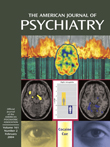Awareness that addiction is a disease of the brain, and that addiction can in part be defined as having little control over craving and relapse, is an accomplishment arising from decades of clinical and preclinical research. However, with the emergence of a new political environment over the last few years, the question of addiction as a personal choice is again being asked by national and local policy makers. This has rekindled interest by biomedical researchers and clinicians to define the point at which the ability to make socially correct decisions is compromised by the disease of addiction. The most simple approach is to say that initial experimentation is a choice, but the ability to choose is thereafter compromised. While this view is in need of refinement, since the majority of Americans who have experimented with legal and illicit drugs of abuse made a choice to quit or limit drug intake, it is clear that factors associated with addiction limit the addict’s ability to make adaptive decisions about drug use. These factors include genetic vulnerability, pharmacologically induced neuroadaptations produced by repeated drug use, and socioeconomic variables. Researchers are actively quantifying each of these factors, and knowledge along these lines continues to lead to improvements in therapeutic options for addicts. However, this critical research effort does not directly address the neurobiological mechanisms underlying the capacity of a person to make a choice about drug use, nor does it address questions such as when during a developing addiction disorder does decision-making ability become compromised, or when with abstinence might the ability to make socially adaptive decisions partly recover.
Two articles in this issue of the
Journal indirectly provide clues as to how to begin to evaluate the neurobiology of the compromised executive functions responsible for making poor choices about addictive substances. Both studies involve functional neuroimaging of addicts. The study by Wang et al. examines glucose metabolism with PET in methamphetamine addicts following short (<6 months) and protracted (12-17 months) intervals of abstinence and asks the question whether there is recovery of the deficits observed in glucose metabolism after short methamphetamine withdrawal. The authors make the interesting observation that differential recovery occurs, with the reductions in the striatum being invariant between withdrawal periods, but the reductions in the thalamus showing recovery. The increased glucose metabolism in the thalamus was associated with improved performance in motor and memory tasks. The authors speculate that the lack of improvement in striatal metabolism reflects a relatively permanent loss of dopamine innervation
(1), while improvement in the thalamus reflects enduring compensatory adaptations in striatal-thalamic circuitry. These data demonstrate significant changes in functional brain circuitry in order to improve behavioral responding in methamphetamine addicts. Whether these adaptations reflect an improvement in decision making was not discerned. In fact, it could be argued that compensatory adaptations in striatal-thalamic circuitry might lead to reliance by an addict more on habit than executive functioning, which is thought to involve cortical areas such as the cognitive subdivision of the anterior cingulate
(2–
4). Nonetheless, this study points toward a need to examine changes in circuitry downstream from the pharmacological site of drug action for adaptations that compromise decision-making ability in addicts or may contribute to restoration of decision making following extended abstinence.
The second article in the current issue by Kilts et al. provides data more directly applicable to the issue of choice in addiction. Using PET imaging, this group asked the question of whether there is a gender difference in regional cerebral blood flow in cocaine addicts and postulated that women would exhibit less limbic activation in agreement with less cue-induced craving
(5). The authors made the striking observation that in contrast with the long-held view that increased blood flow to the amygdala is coupled with the induction of cue-related cocaine craving
(4), women show substantially less increase than men in blood flow to the amygdala. Because of a near significant negative correlation in blood flow between the amygdala and dorsal anterior cingulate, Kilts et al. suggest that this may reflect a greater degree of executive control over cue valuation by the amygdala. Thus, this study may contain the rudiments of a neuroimaging assay for the ability to self-regulate craving and presumably relapse to drug taking.
While neither of the studies directly assessed the problem of choice in addiction, both demonstrate that the technical ability may exist to quantify the ability of addicts to regulate neuronal and thereby behavioral responses to relapse-provoking cues. Studies designed specifically along these lines could provide the potential to evaluate decision-making abilities with regard to drug associations. This information can then be used to guide therapeutic options for treatment depending on how biologically compromised the addict’s decision-making ability has become as a result of genetic disposition, drug-induced neuroadaptations, and socioeconomic variables.

